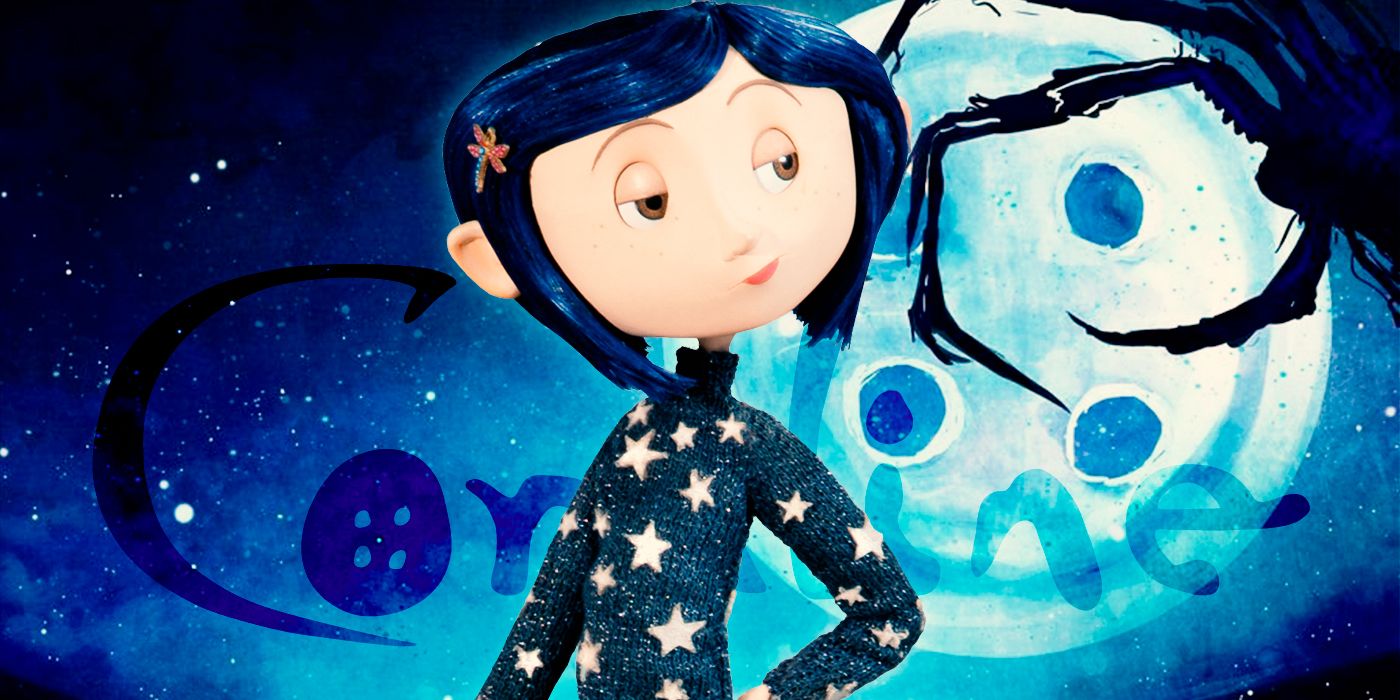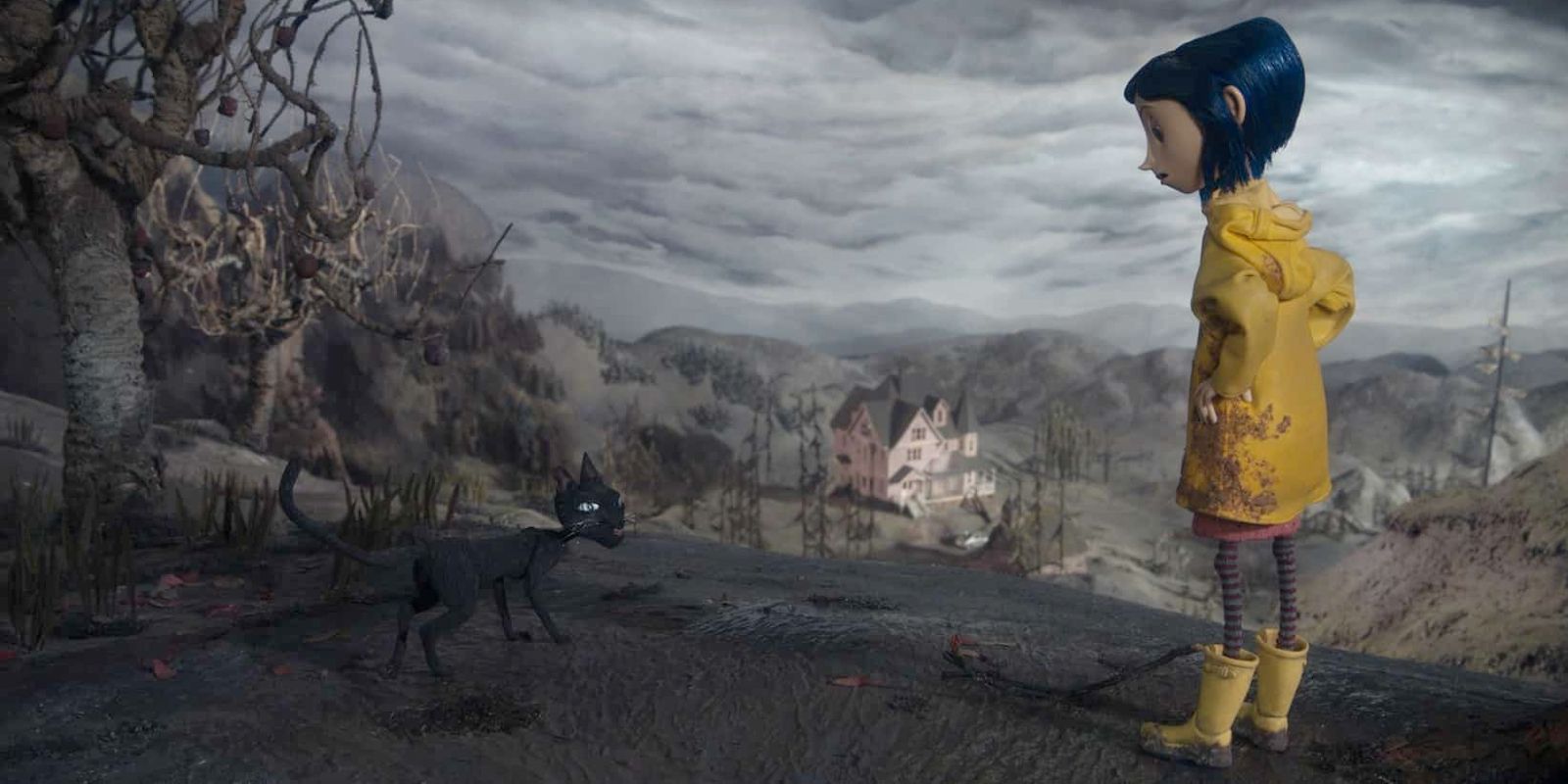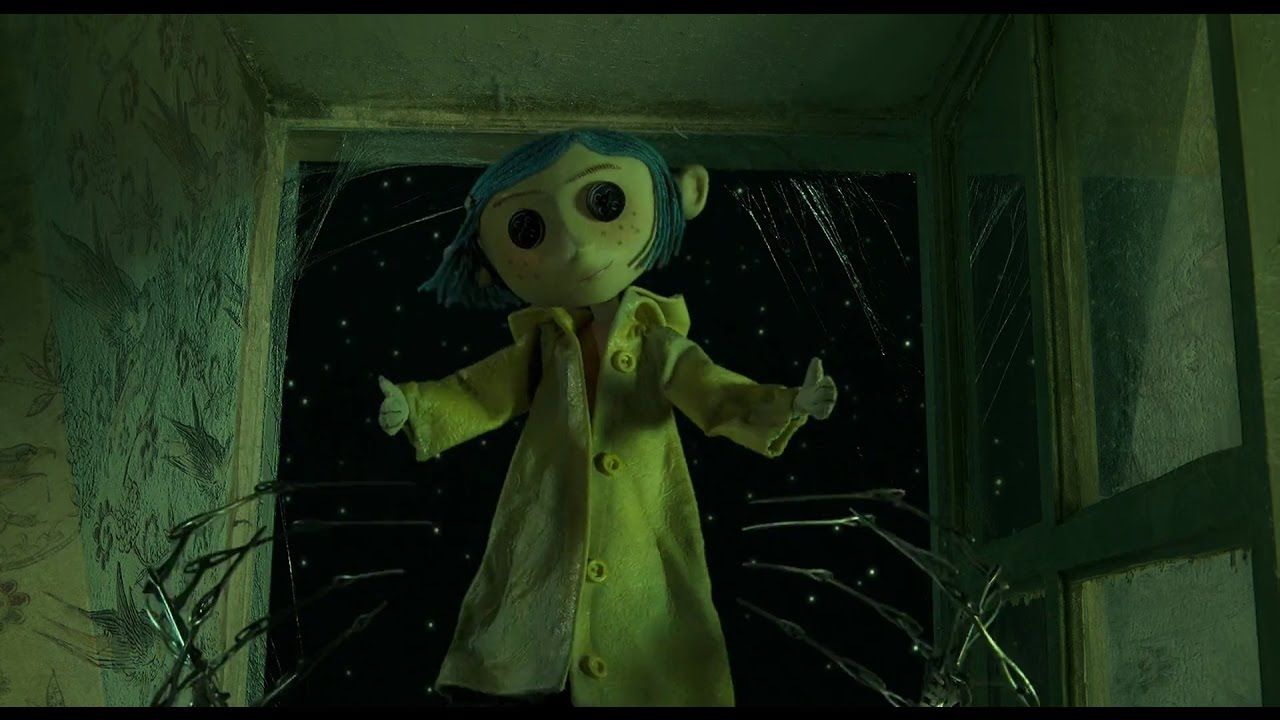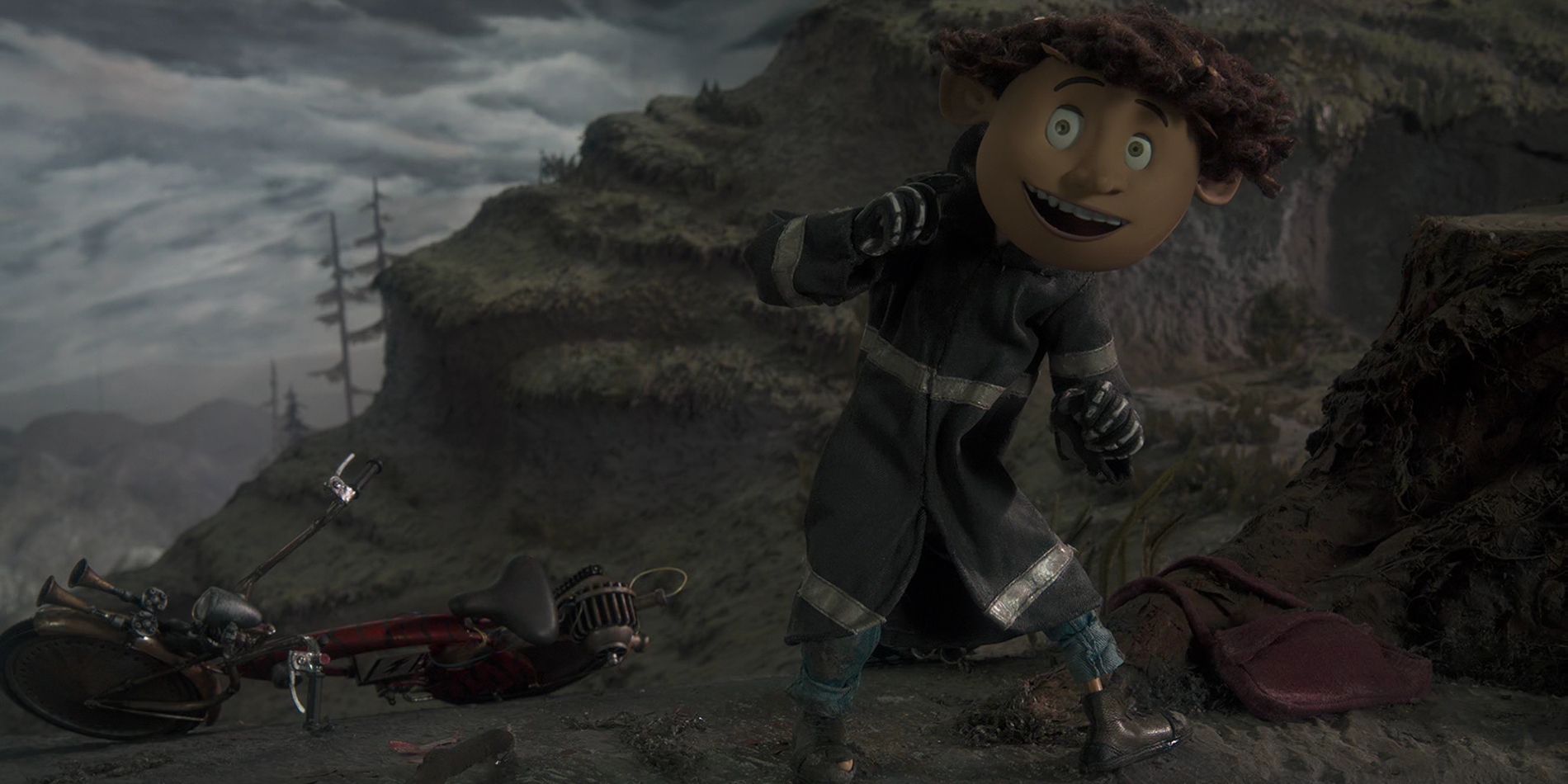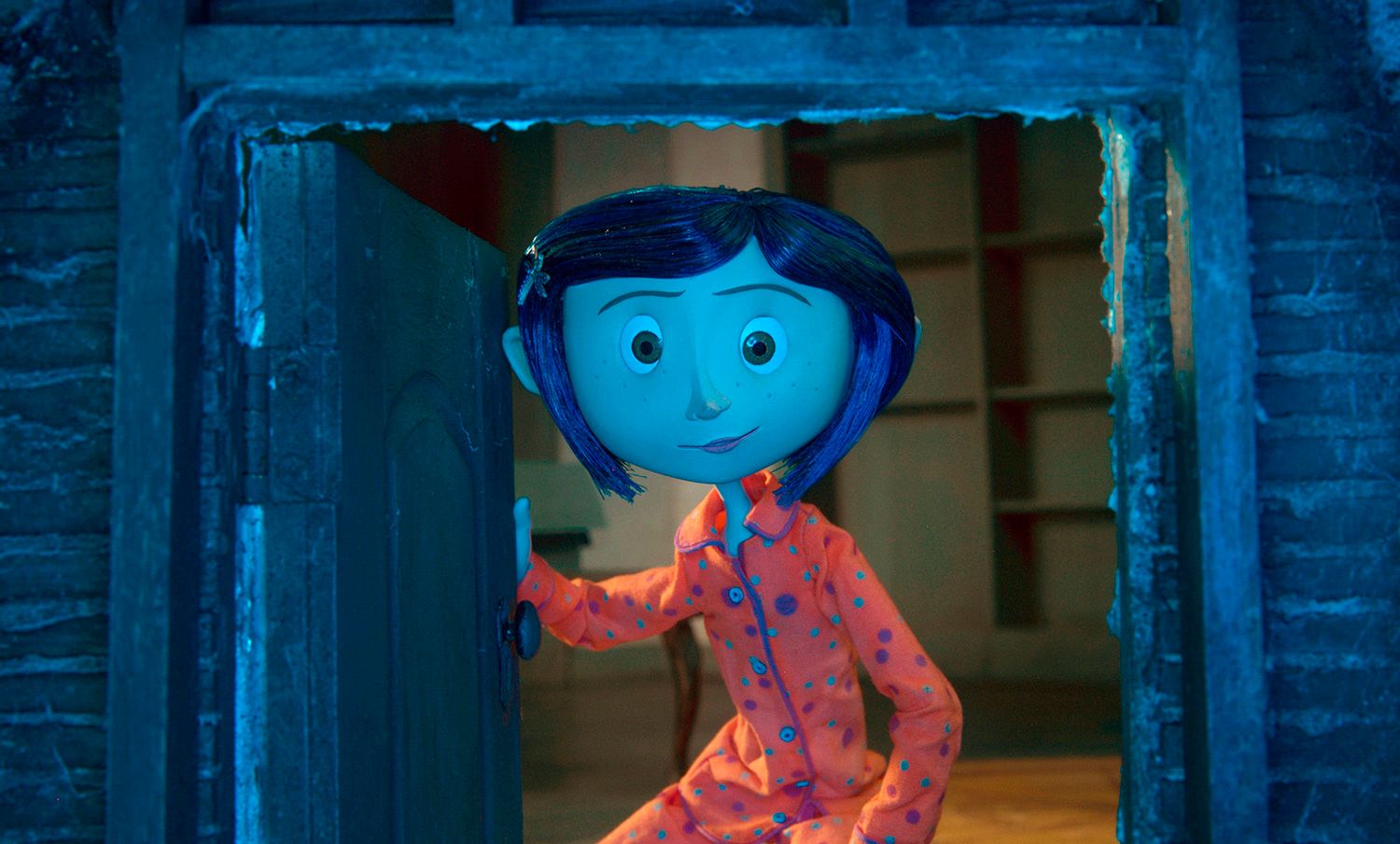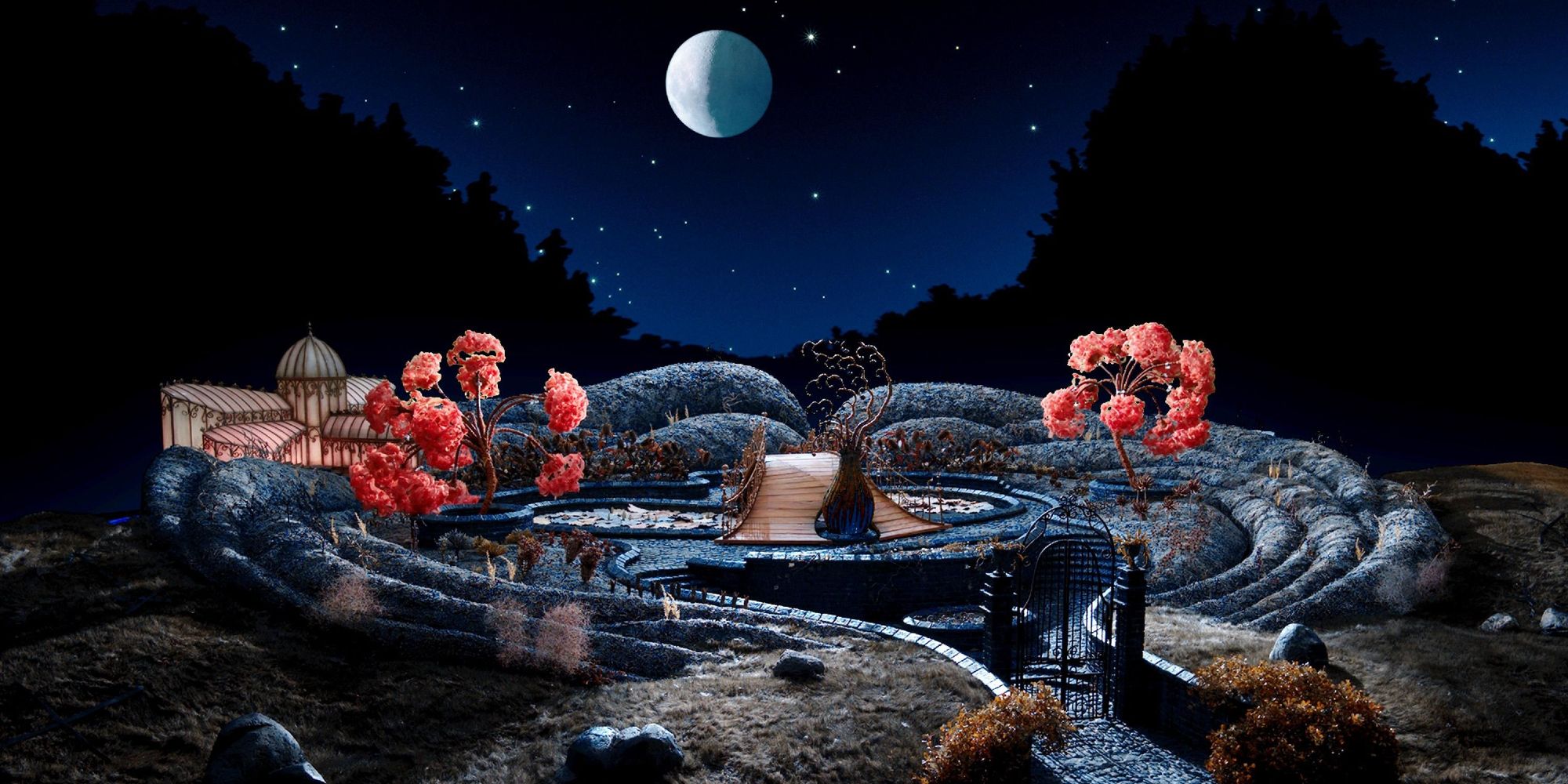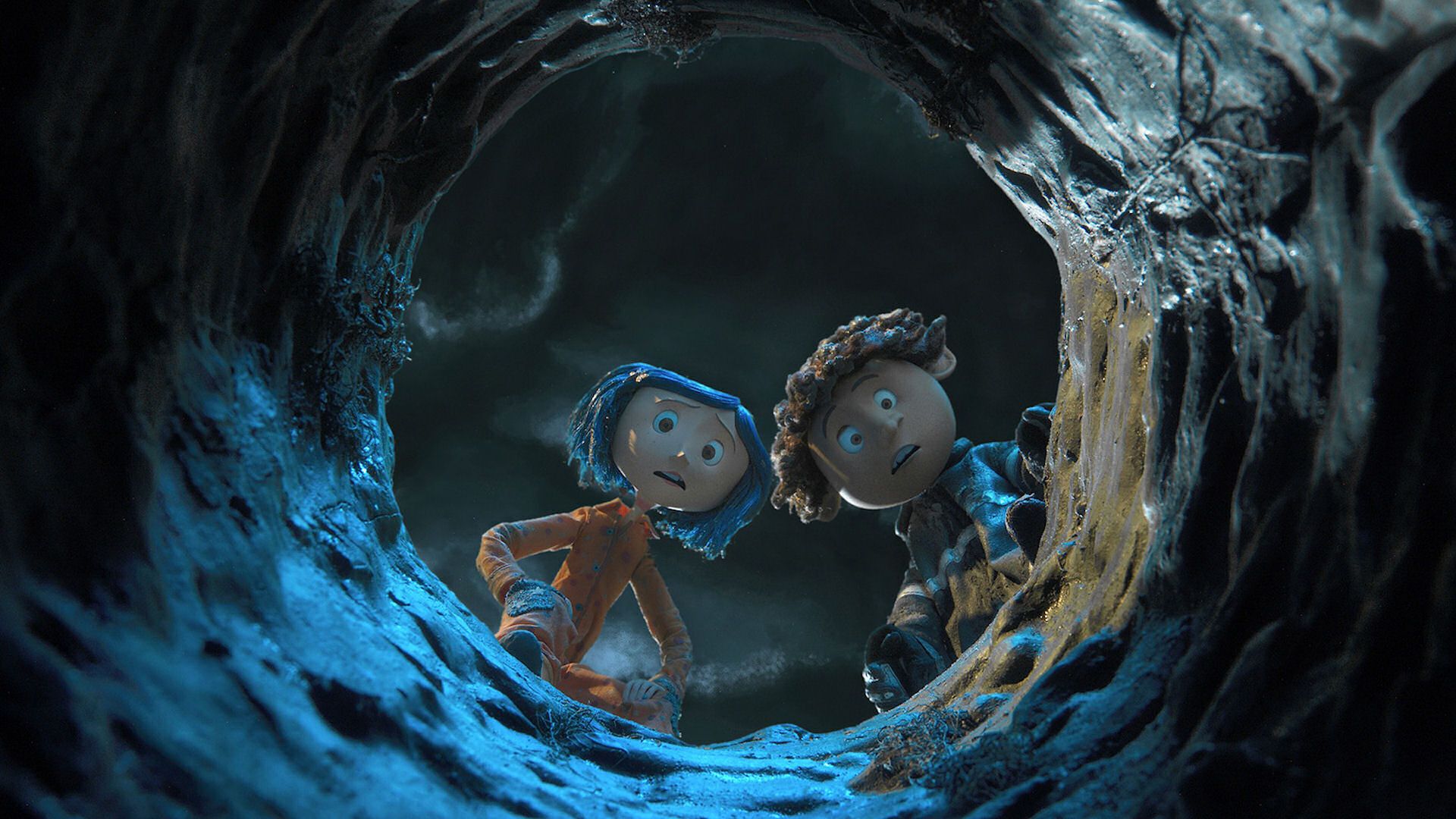Neil Gaiman's beloved children's novella Coraline was published in 2002 and quickly became a favorite with readers of all ages. Seven years later, a stop-motion adaptation produced by the now-legendary LAIKA Studios was released under the direction of Henry Selick, the venerated auteur behind such timeless hits as The Nightmare Before Christmas.
Both the book and the movie are now cherished classics in their own right, with passionate followings that resurface every year when the Halloween season rolls around. As always, changes had to be made in the process of adaptation, and the LAIKA movie has some significant differences from Gaiman's original story. Here's a look at some of the most dramatic alterations LAIKA made after taking the tale of Coraline into its talented hands.
Coraline's Setting Moves From England to America
The Coraline novella is set in England, and, in many ways, its text is infused with British culture. The characters wear macintoshes, eat salt taffy from Bristol and talk about going down to the shops. For the movie, director Henry Selick moved the action to Oregon, casting American actors in the majority of the roles. The only holdovers are Misses Spink and Forcible, who are every bit as delightfully British and eccentric as they were in the book.
The Other Mother's Button-Eyed Rag Dolls
It's hard to think of a more iconic visual opening to a film than Coraline's first shots of the Other Mother's spindly, inhuman hands delicately disassembling a voodoo-like rag doll and making it look exactly like the young protagonist. It appears she makes these dolls as a way of luring her targets to the other world. Wybie passes the doll on to Coraline when it shows up on the Pink Palace's doorstep, and she takes it as a mysterious but adorable gift, making it her companion in her adventures around the house. The dolls were invented entirely for the film, and they're a welcome addition that makes a lot of sense for what the movie is trying to achieve.
Wyborne, AKA Wybie, Coraline's New Friend
This character was created wholesale for the Coraline movie. Selick stated that he included Wybie to flesh out the story, as an exact adaptation would only have contained enough material for perhaps a 45-minute film. The main purpose of Wybie's character is to be a dialogue partner for Coraline, which allows the audience to hear what's going on in her head, a device that isn't needed in the written medium. His existence has some significant impacts on the plot as well -- for example, one of the ghost children in the movie is Wybie's grandma's sister, who he mentions went missing when they were little. This is the reason why his grandma doesn't let him go inside the Pink Palace Apartments. The Other Mother also makes a twisted, mute version of Wybie in her world.
Coraline's Personality Shifts From Quietly Observant to Feisty
Coraline is overall more polite and pragmatic in the book, whereas she's quite feisty in the movie. Gaiman writes Coraline as a quietly intelligent and observant child, an echo of other British children's book protagonists who make it through their adventures with sensible practicality and independence. On the other hand, Dakota Fanning's portrayal gives a sassier, spunkier take on the character -- her version of Coraline is the type of little girl who frequently exclaims, "Ugh!" and calls the unfortunate Wybie things like "Why-Were-You-Born."
The Other World Is More Enticing in the Film
The Other Mother's fake world doesn't really fool Coraline for a minute in the book, but she's fairly taken with it in the movie. Selick uses his characteristically whimsical visual imagination to create sequences in the Other World that brim over with fun and magic. It's hard not to be as taken in as Coraline is when the Other Father sings a delightful song dedicated to her (in the distinctively droll voice of none other than John Linnell of They Might Be Giants) or when a miniature gravy train trundles around the dinner table bearing delicious sauce for her potatoes.
The Coraline-Shaped Garden Quickly Became Menacing
One of the enticements the Other Mother sets up for Coraline is the wondrously colorful garden in the yard, which teems with magical flora and is shaped to look like Coraline's face when viewed aerially. Later, an action-packed showdown with the Other Father takes place in this location, with all the wonderful plants and devices that so delighted Coraline before twisted into their true, terrifying selves.
Wybie Plays an Important Role in the Film's Ending
In the Coraline movie, the ghost children have to warn Coraline about the Beldam's hand escaping into her world; in the book, she already knows, so she sets a trap for it. Wybie, once again, changes things with his presence, helping Coraline subdue and dispose of the malevolent hand, a feat she accomplishes by herself in the book.

